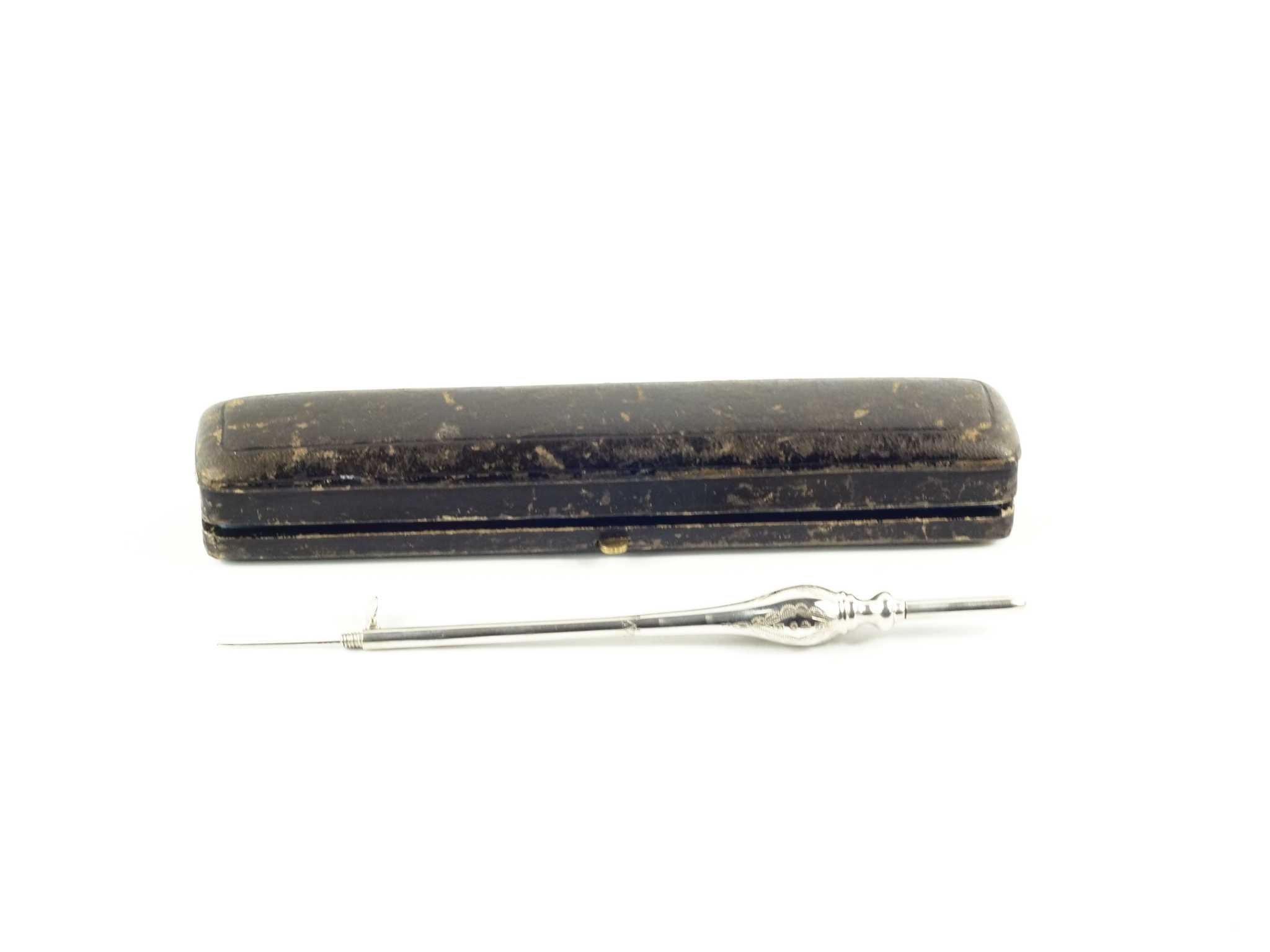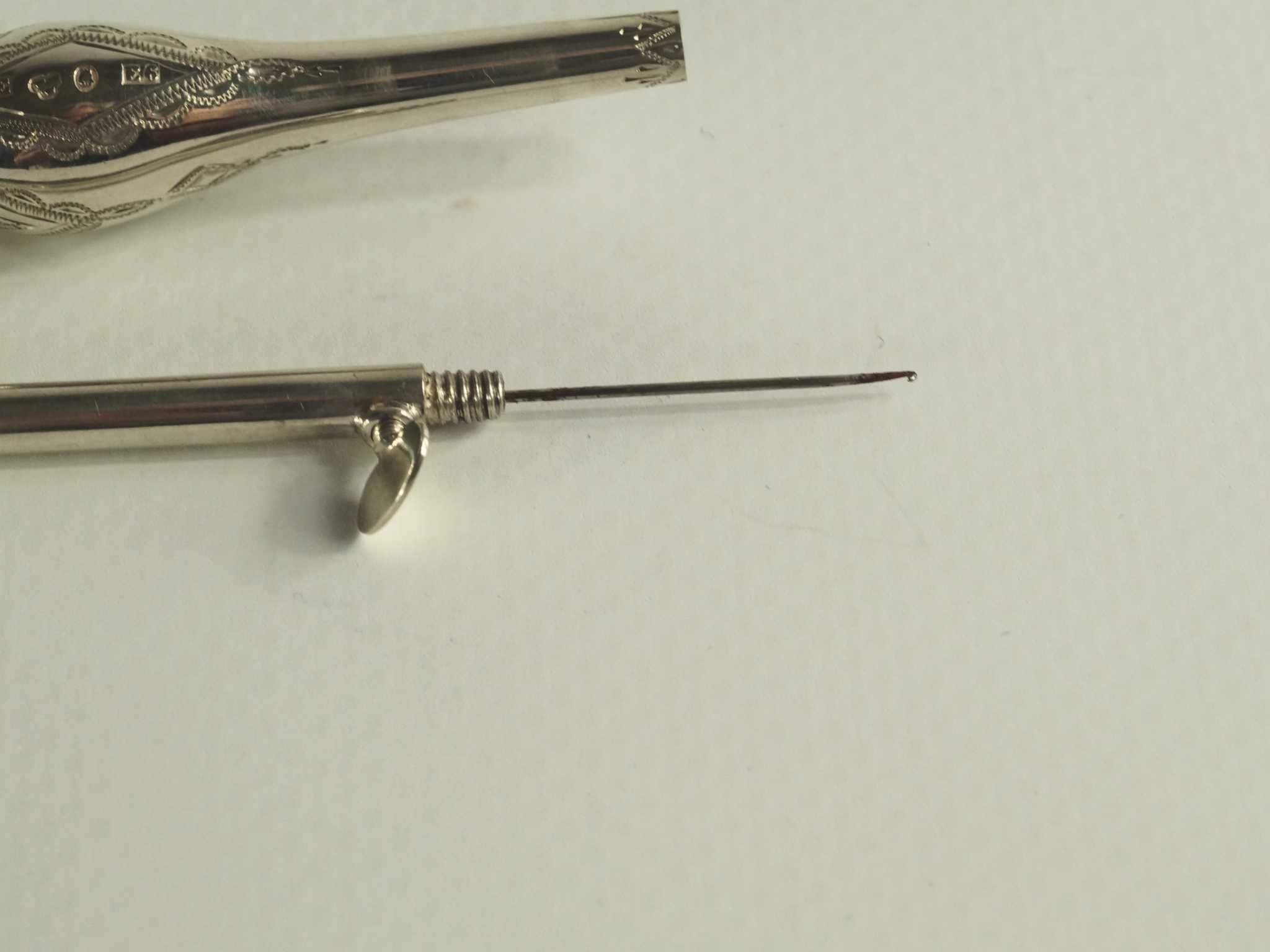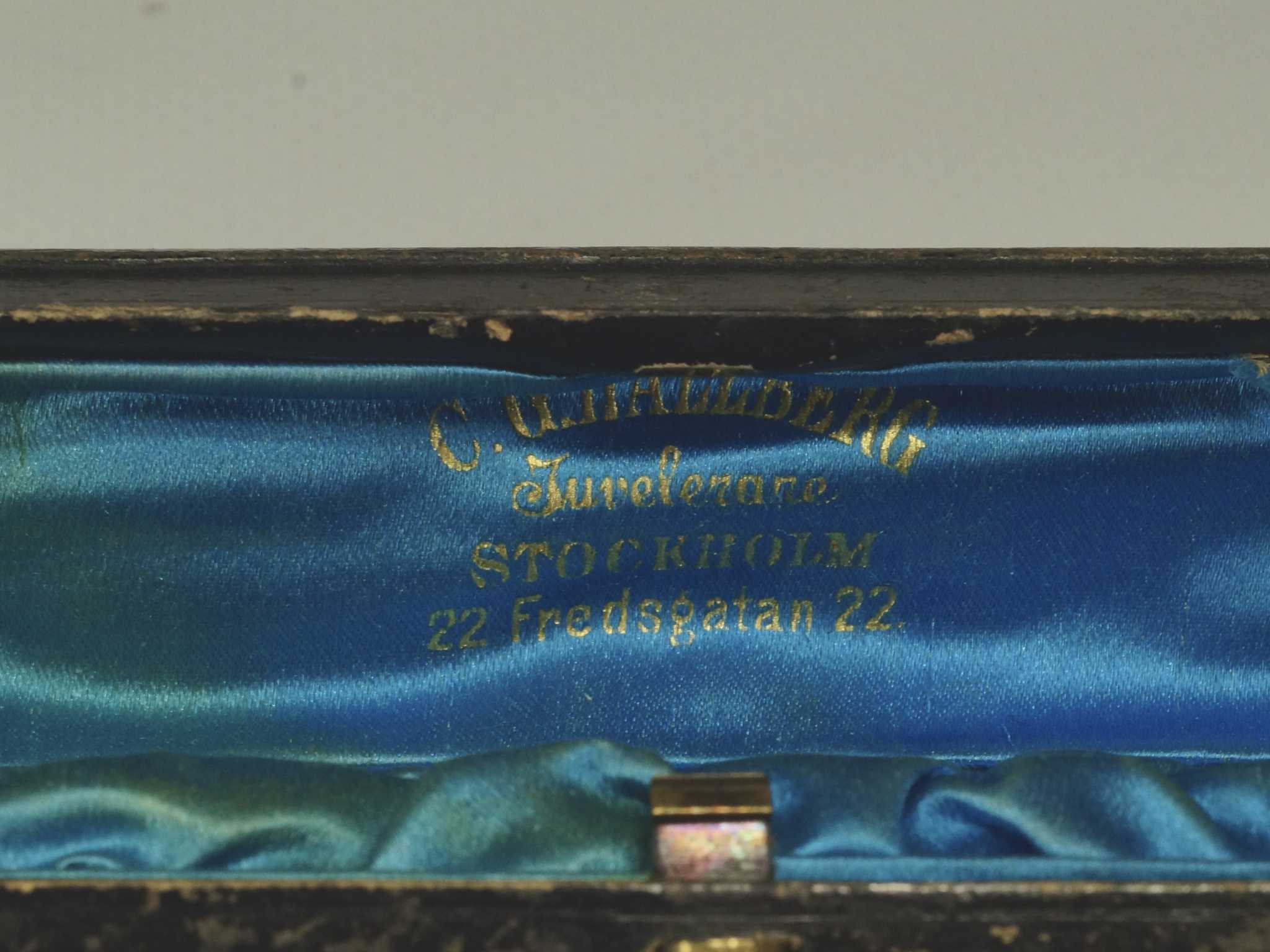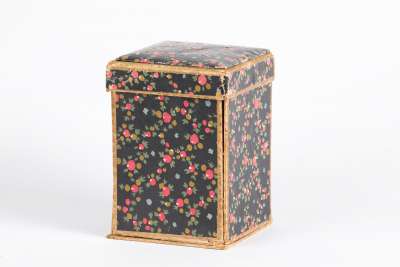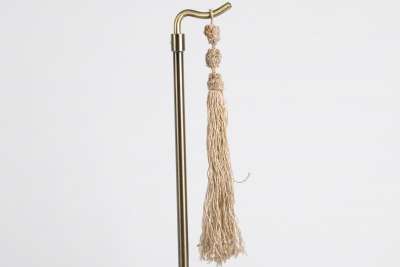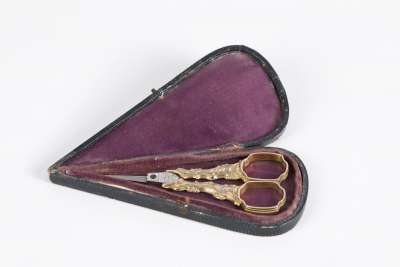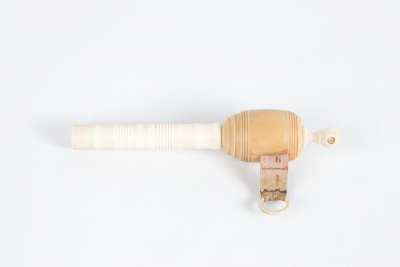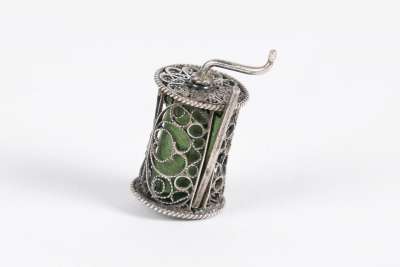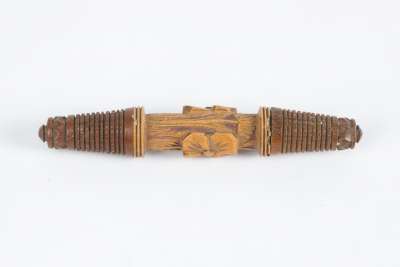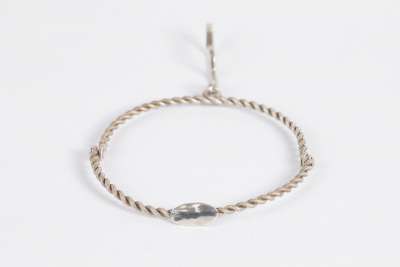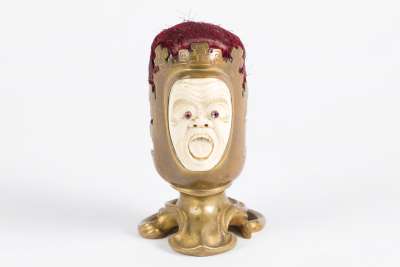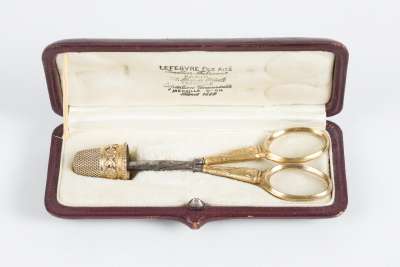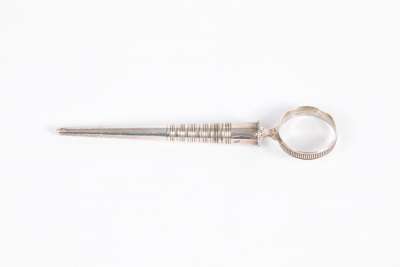This Dutch silver tambour, crafted by the esteemed silversmith 'LJE', is a remarkable example of late 19th to early 20th-century European craftsmanship. Featuring an intricately engraved two-part body with a functional turn-key mechanism, this piece is not only a tool but a work of art. The tambour is accompanied by its original leather case, lined with ruched blue silk, and is distinctly marked with the name 'C.G. Hallberg, Stockholm', indicating its esteemed provenance. The item exemplifies traditional Dutch silversmithing techniques and reflects the high level of skill and artistry characteristic of the period.
Condition Report
The Dutch silver tambour is in good condition, showing wear consistent with its age and historical use. The engraved body and turn-key mechanism remain functional, although they display minor signs of oxidation, particularly on the hook. Such patina is typical for silver items of this period, contributing to its authenticity and historical charm. The leather case has preserved its integrity, with the ruched blue silk interior maintaining its vibrancy, albeit with slight wear at the edges. The overall preservation of this piece reflects careful ownership and offers potential buyers a significant historical artifact.
Dimensions
Weight: 60gm, Length: 14cm boxed 16cm, Width: 1cm boxed 3cm, Height: 1cm boxed 2cm.
A Fine Tool for Needlework Enthusiasts
The tambour is a specialised tool historically used for intricate needlework, particularly tambour embroidery, which involves creating chain stitches on fabric using a hook. Its design facilitates a smooth, continuous stitching process, which was highly valued in decorative arts and fashion. This tool would have been an essential component of a seamstress's or embroiderer's kit, reflecting the importance of precision and quality in textile production during its time.
Classic Example of Dutch Silverwork
This tambour represents a classic example of Dutch silver craftsmanship. The intricate engravings and the elegant simplicity of the design are characteristic of the period's aesthetic values, which favoured both functionality and beauty. Dutch silver items from this era are known for their quality and attention to detail, often featuring rich ornamentation and skilled workmanship that highlight the artisan's dedication to their craft. This piece embodies these qualities, making it a valuable addition to any collection of fine silver or decorative arts.
The Craft of Silver and Engraving
The creation of this tambour involved skilled silversmithing techniques, including precise casting and engraving. The detailed engravings were likely done by hand, requiring a steady hand and a keen eye for detail. The turn-key mechanism, integral to the tambour's function, would have been crafted with particular care to ensure smooth operation. The testing of the silver for quality assures its authenticity and adherence to the standards of the time. Such craftsmanship not only ensured the tool's durability but also added to its aesthetic appeal.
Crafted by 'LJE', a Notable Silversmith
The maker's mark 'LJE' identifies this piece as the work of a notable silversmith, whose craftsmanship is respected among collectors of Dutch silver. While specific details about the craftsman remain scarce, the quality and design of the tambour suggest an artisan well-versed in the traditions of silversmithing. The association with 'C.G. Hallberg, Stockholm', further elevates its status, indicating a network of skilled craftspeople and retailers who valued quality and artistry in their offerings. This background provides insight into the item's cultural and historical context.
Collected by Enthusiasts of Needlework Tools
Antiques like this Dutch silver tambour are highly sought after by collectors who appreciate the history and artistry of needlework tools. These collectors value the combination of functionality and design, which provides a tangible connection to the craftsmanship and daily life of past eras. The preservation of such tools allows for the appreciation of traditional techniques and offers insights into the social and cultural contexts in which they were used. As a result, pieces like this tambour are cherished not only for their beauty but also for their historical significance and the stories they embody.


